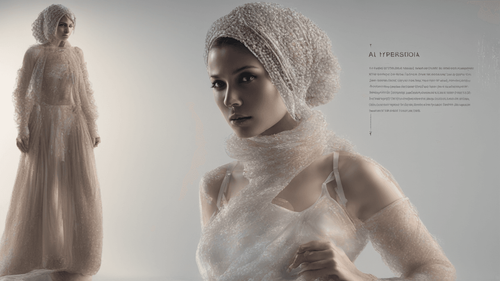
Introduction
In the ever-evolving landscape of technology, artificial intelligence (AI) continues to push boundaries and redefine possibilities. One of the most captivating applications of AI is its ability to create art from text, a concept that marries language with visual creativity in unprecedented ways. This article delves into the realm of AI creating art from text, unveiling the processes, potential, and profound impact it has on the world of art and imagination.
AI Creating Art from Text: Unveiling the Magic
The fusion of AI and art sparks a new era of innovation, where machines are capable of transforming written words into captivating visual masterpieces. The intricate algorithms and neural networks that underpin AI-powered art generators enable the translation of textual descriptions into vibrant images, sculptures, and multimedia presentations that challenge conventional artistic boundaries.
The Evolution of AI-Generated Art
Artificial intelligence has traversed a remarkable journey from its nascent stages to becoming a trailblazing force in the world of creativity. Early experiments with AI-generated art were rudimentary, but with advancements in deep learning and natural language processing, modern AI systems can now interpret text and manifest intricate artistic renditions that resonate with human emotions.
The Picasso AI Revolution
Unleashing Creativity with Picasso AI
Picasso AI stands as a monumental achievement in the realm of AI-generated art. Named after the legendary artist Pablo Picasso, this cutting-edge AI system has redefined the boundaries of artistic expression. By interpreting textual input, Picasso AI can produce awe-inspiring visual representations that encapsulate the essence of the provided descriptions.
Behind the Scenes: How Picasso AI Works
Delving into the mechanics of Picasso AI reveals a complex interplay of algorithms and creativity. The system utilizes a combination of generative adversarial networks (GANs) and recurrent neural networks (RNNs) to decipher text and generate corresponding visual outputs. This intricate dance between machine learning and artistry culminates in artworks that provoke thought and stir emotions.
The Renaissance of Collaboration: Humans and AI
The emergence of AI-generated art has sparked a profound reevaluation of the roles of humans and machines in the creative process. Rather than supplanting human artists, AI serves as a powerful collaborator, augmenting their artistic vision and expanding the horizons of what is creatively achievable.
AI Creating Art from Text: Real-World Applications
Visual Storytelling Redefined
AI's ability to transform text into visuals has breathed new life into the realm of storytelling. Authors and content creators can now visualize their narratives, adding an immersive layer of engagement for readers. Whether it's a children's book or a science fiction epic, AI-generated visuals enrich the storytelling experience.
Architectural Visualization and Design
Architects and designers harness the prowess of AI to translate architectural descriptions into lifelike renderings. This process enhances communication and collaboration among professionals, enabling clients and stakeholders to vividly envision the final product before ground is even broken.
Fashion and Style Forecasting
The fashion industry embraces AI-generated art to predict and explore emerging trends. By transforming fashion-related text into striking visuals, designers can gain fresh insights and inspiration, shaping the future of couture with a blend of human ingenuity and AI innovation.
FAQs About AI Creating Art from Text
What is the underlying technology behind AI-generated art? AI-generated art relies on complex neural networks, such as GANs and RNNs, to interpret textual input and generate corresponding visual outputs.
Can AI-generated art truly evoke emotions like human-created art? Yes, AI-generated art has demonstrated the capacity to evoke a wide range of emotions, sparking meaningful connections with viewers.
Does AI-generated art replace the need for human artists? No, AI-generated art complements human creativity and serves as a collaborator, expanding the possibilities of artistic expression.
Are there ethical concerns regarding AI-generated art? Ethical discussions arise around issues of originality, copyright, and the role of the artist in AI-assisted creations.
How does AI-generated art impact traditional artistic mediums? AI-generated art challenges traditional boundaries, pushing artists to explore new forms of expression and incorporate technology into their work.
Can individuals with no artistic background use AI to create art from text? Absolutely, AI tools like Picasso AI empower individuals with various backgrounds to engage in creative expression, blurring the lines between art and accessibility.
Conclusion
In the captivating realm of AI creating art from text, innovation dances with imagination to create a symphony of visuals that transcend the ordinary. The collaboration between human ingenuity and AI prowess heralds a new chapter in creative expression, where words are no longer confined to the pages but transform into vibrant canvases of inspiration. As technology continues to evolve, the boundaries of artistic exploration are limitless, and the journey of AI creating art from text is a testament to the power of human innovation.